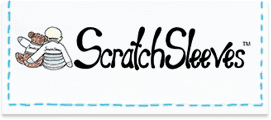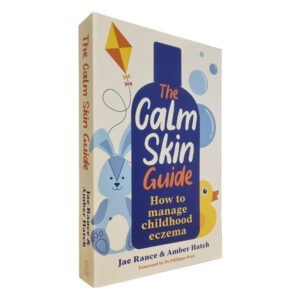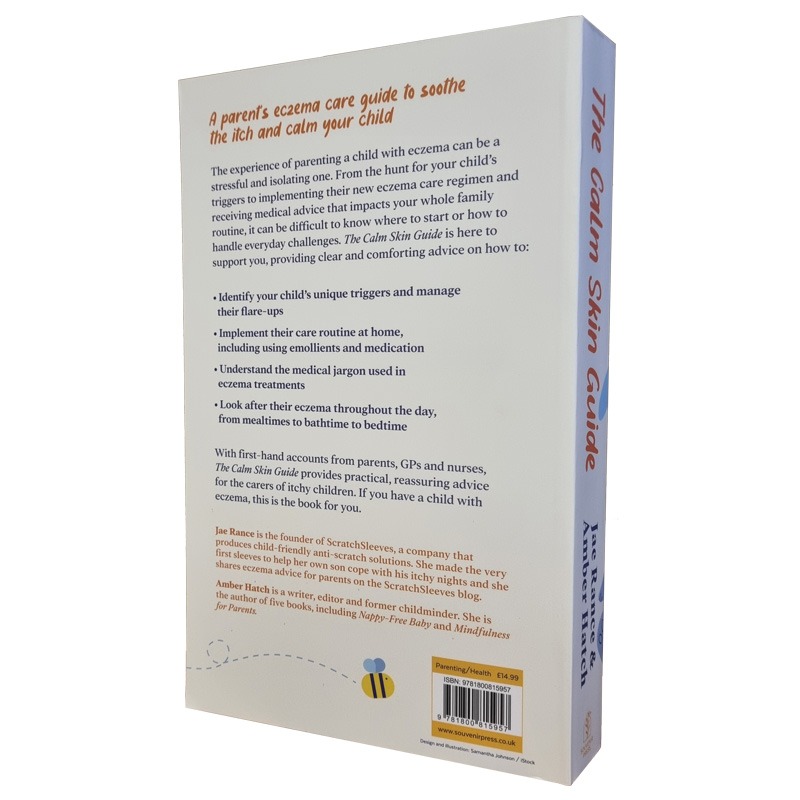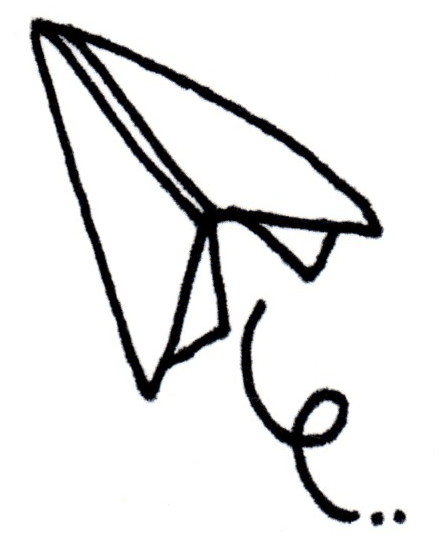Zoë’s special salve – our favourite DIY eczema cream

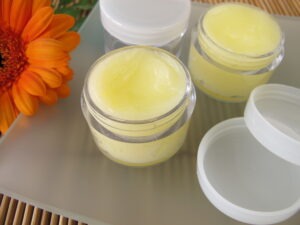

Like many eczema kids, our 5 year old hates having eczema creams applied. We have tried all sorts of things to persuade her that they aren’t so bad: from explanations and sticker charts, iPad apps and bribes… One of the few things that have had her accepting creams happily for more than a couple of days has been getting her involved in making her own DIY eczema cream. She loves helping make this simple coconut oil and manuka honey eczema salve. Homemade eczema creams and salves may not be as effective as prescription emollients (I’ve never had the chance to do a direct comparison), but anything goes on without a fight and that isn’t wiped off in the first 5 seconds has a much better chance of making a difference.
While making a DIY eczema cream shouldn’t be your first port of call, it can be useful if you can’t find a conventional emollient that your child with tolerate. Our recipe uses coconut oil and manuka honey, both of which have been shown to ameliorate eczema symptoms.
Zoë’s homemade eczema cream recipe
Here’s the recipe for her favourite salve which makes enough for two 60ml jars
Ingredients
- 15g beeswax
- 60g cold pressed coconut oil (why it works)
- 30g Manuka honey (why it works)
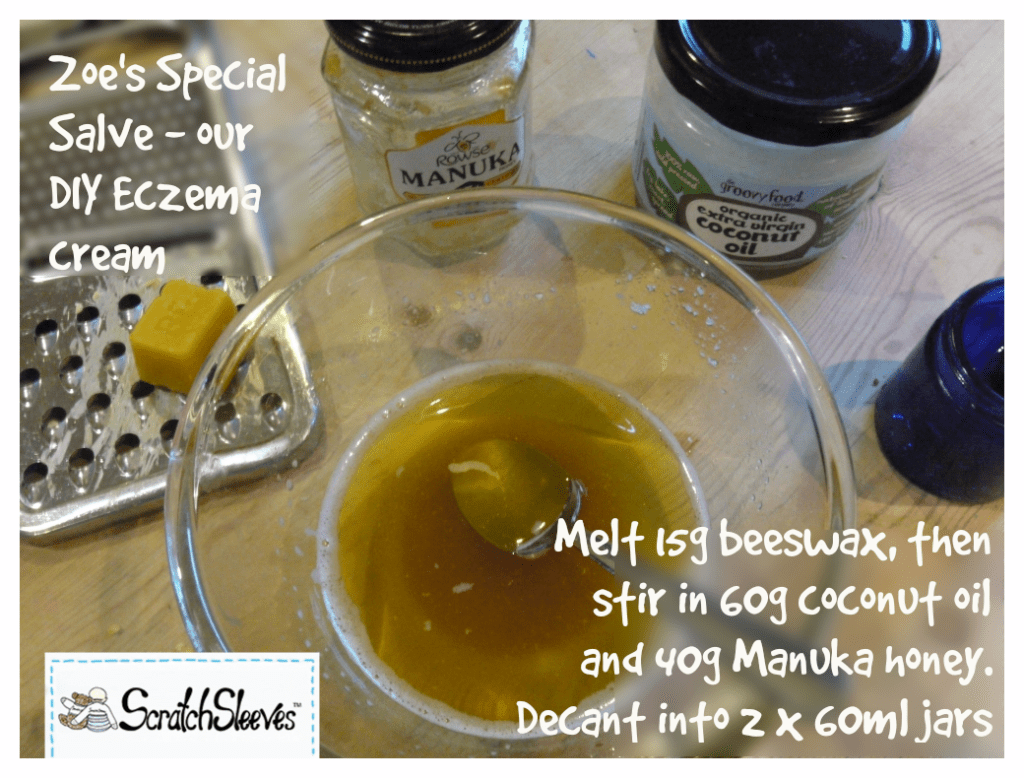
Method:
- Grate the beeswax into a microwave proof bowl and pop in the microwave on high for about 4 mins, until the remaining flakes are floating on the melted wax. Leave to stand for a couple of minutes until completely melted. Take care, it is really hot at this stage.
- While the wax is melting, measure out the coconut oil and honey. Once the wax is completely liquid, add the honey and coconut oil and immediately stir briskly until the mixture is smooth. This is Zoë’s job.
- Decant into a dry, sterile glass jars and leave to set. The mixture has a tendency to separate slightly, so give the jars a stir with a warm spoon every few minutes until the mixture solidifies (about 10-20 minutes).
How to use
To use, smooth on to the affected area and leave for 10-15 minutes (or longer) before rinsing off with warm water and patting dry. From Zoë’s point of view, the beauty of using a salve is that it’s fine to wash it off after story-time and I’m sure that she has noticed that she gets longer stories when it’s on! It also works really well as a protective lip salve in the winter. While you can leave this salve on, the honey does make it a bit tacky. If you’re after DIY eczema creams will sink into the skin, there’s a great recipe for one in James Wong’s book.
There’s plenty of scope to tinker with the proportions of this salve to find a consistency which works for you. You can also try substituting around 10g coconut oil for 15ml of vitamin-A rich sea buckthorn oil (trials show that the whole fruit oil is more effective in treating eczema than the seed oil) or neem oil.
As with all new creams – remember to patch test on healthy skin before using. It’s also wise to repeat the patch test each time to restock the ingredients as natural products are prone to impurities and these can vary between brands and even batches.
Here at ScratchSleeves, we don’t just share our experiences of bringing up an eczema child (and favourite allergy-friendly recipes), we also manufacture and sell our unique stay-on scratch mitts and PJs for itchy babies, toddlers and children. We now stock sizes from 0-adult years in a range of colours. Visit our webshop for more information.
The Calm Skin Guide
Love our blog? It's also available in book format with:
- First hand accounts from parents & medical professionals
- Easy navigation
- Comprehensive index
- Additional material
Signed copies available at no extra cost
Written by:
Interesting article? Don't keep it to yourself...
Read next...
You may also find helpful...
Quick buy


Multi Buy Discount

Spend between £30 - £60 and save 5%
Spend between £60 - £120 and save 10%
Spend over £120 and save 15%
Discount automatically applied at checkout
No Quibbles Guarantee
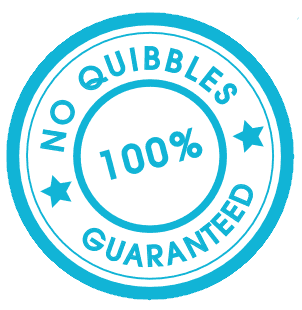
ScratchSleeves abide by a no quibbles guarantee.
Free UK Postage

Free packing and postage on all UK orders. For overseas orders to Europe postage is from £3.50, to USA is £6.50 and to the rest of the world, from £3.75.

